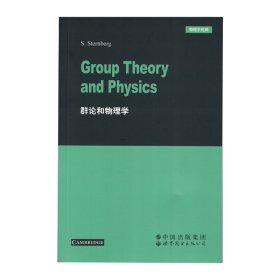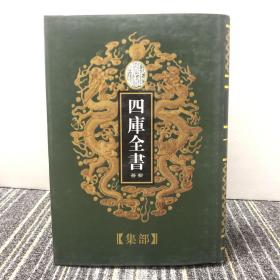
群论和物理学
正版现货 可开具图书发票 下单后当天即可发货
¥ 57.61 7.8折 ¥ 74 全新
仅1件
作者S.Sternberg 著
出版社世界图书出版公司
ISBN9787506249652
出版时间2000-04
装帧平装
开本其他
定价74元
货号8959917
上书时间2024-10-14
- 在售商品 暂无
- 平均发货时间 6小时
- 好评率 暂无
- 店主推荐
- 最新上架
商品详情
- 品相描述:全新
- 商品描述
-
导语摘要
Group theory is one of the great achievements of 19th century mathematics. It emerged as a unifying idea drawing on four different sources: number theory, the theory of equations, geometry, and crystallography. The early motivation from number theory stemmed from the work of Euler, Legendre and Gauss on power residues. In the theory of equations, the study of various permutation groups became increasingly important through the work of Lagrange, Ruffini, Gauss, Abel, Cauchy, and especially Galois. The discovery of new types of geometries-including non-Euclidean, affine, projective etc.-led, eventually, to the famous Erlangen program of Klein, which proposed that the true study of any geometry lies in an analysis of its group of motions. In crystallography, the possible symmetries of the internal structure of a crystal were enumerated long before there was any possibility of its physical determination (by X-ray analysis).
目录Preface
1 Basic definitions and examples
1.1 Groups: definition and examples
1.2 Homomorphisms: the relation between SL 2, and the Lorentz group
1.3 The action of a group on a set
1.4 Conjugation and conjugacy classes
1.5 Applications to crystallography
1.6 The topology of SU 2 and SO 3
1.7 Morphisms
1.8 The classification of the finite subgroups of SO 3
1.9 The classification of the finite subgroups of O 3
1.10 The icosahedral group and the fullerenes
2 Representation theory of finite groups
2.1 Definitions, examples, irreducibility
2.2 Complete reducibility
2.3 Schur''s lemma
2.4 Characters and their orthogonality relations
2.5 Action on function spaces
2.6 The regular representation
2.7 Character tables
2.8 The representations of the symmetric group
3 Molecular vibrations and homogeneous vector bundles
3.1 Small oscillations and group theory
3.2 Molecular displacements and vector bundles
3.3 Induced representations
3.4 Principal bundles
3.5 Tensor products
3.6 Representative operators and quantum mechanical selection rules
3.7 The semiclassical theory of radiation
3.8 Semidirect products and their representations
3.9 Wigner''s classification of the irreducible representations of the Poincare group
3.10 Parity
3.11 The Mackey theorems on induced representations, with applications to the symmetric group
3.12 Exchange forces and induced representations
4 Compact groups and Lie groups
4.1 Haar measure
4.2 The Peter-Weyl theorem
4.3 The irreducible representations of SU 2
4.4 The irreducible representations of SO 3 and spherical harmonics
4.5 The hydrogen atom
4.6 The periodic table
4.7 The shell model of the nucleus
4.8 The Clebsch-Gordan coefficients and isospin
4.9 Relativistic wave equations
4.10 Lie algebras
4.11 Representations of su 2
5 The irreducible representations of SU n
5.1 The representation of Gl V on the r-fold tensor product
5.2 Gl V spans Hornsr TrV, TrV
5.3 Decomposition of TrV into irreducibles
5.4 Computational rules
5.5 Description of tensors belonging to W
5.6 Representations of Gl V and Sl V on U
5.7 Weight vectors
5.8 Determination of the irreducible finite-dimensional repre-sentations of Sl d, C
5.9 Strangeness
5.10 The eight-fold way
5.11 Quarks
5.12 Color and beyond
5.13 Where do we stand
Appendix A The Bravais lattices and the arithmetical crystal classes
A.1 The lattice basis and the primitive cell
A.2 The 14 Bravais lattices
Appendix B Tensor product
Appendix C Integral geometry and the representations of the symmetric group
C.1 Partition pairs
C.2 Proof of the main combinatorial lemma
C.3 The Littlewood-Richardson rule and Young''s rule
C.4 The ring of virtual representations of all the Sn
C.5 Dimension formulas
C.6 The Murnaghan-Nakayama rule
C.7 Characters of Gl V
AppendixD Wigner''s theorem on quantum mechanical symmetries
Appendix E Compact groups, Haar measure, and the Peter-Weyl theorem
Appendix F A history of 19th century spectroscopy
Appendix G Characters and fixed point formulas for Lie groups
Further reading
Index
内容摘要Group theory is one of the great achievements of 19th century mathematics. It emerged as a unifying idea drawing on four different sources: number theory, the theory of equations, geometry, and crystallography. The early motivation from number theory stemmed from the work of Euler, Legendre and Gauss on power residues. In the theory of equations, the study of various permutation groups became increasingly important through the work of Lagrange, Ruffini, Gauss, Abel, Cauchy, and especially Galois. The discovery of new types of geometries-including non-Euclidean, affine, projective etc.-led, eventually, to the famous Erlangen program of Klein, which proposed that the true study of any geometry lies in an analysis of its group of motions. In crystallography, the possible symmetries of the internal structure of a crystal were enumerated long before there was any possibility of its physical determination (by X-ray analysis).
相关推荐
— 没有更多了 —

























以下为对购买帮助不大的评价